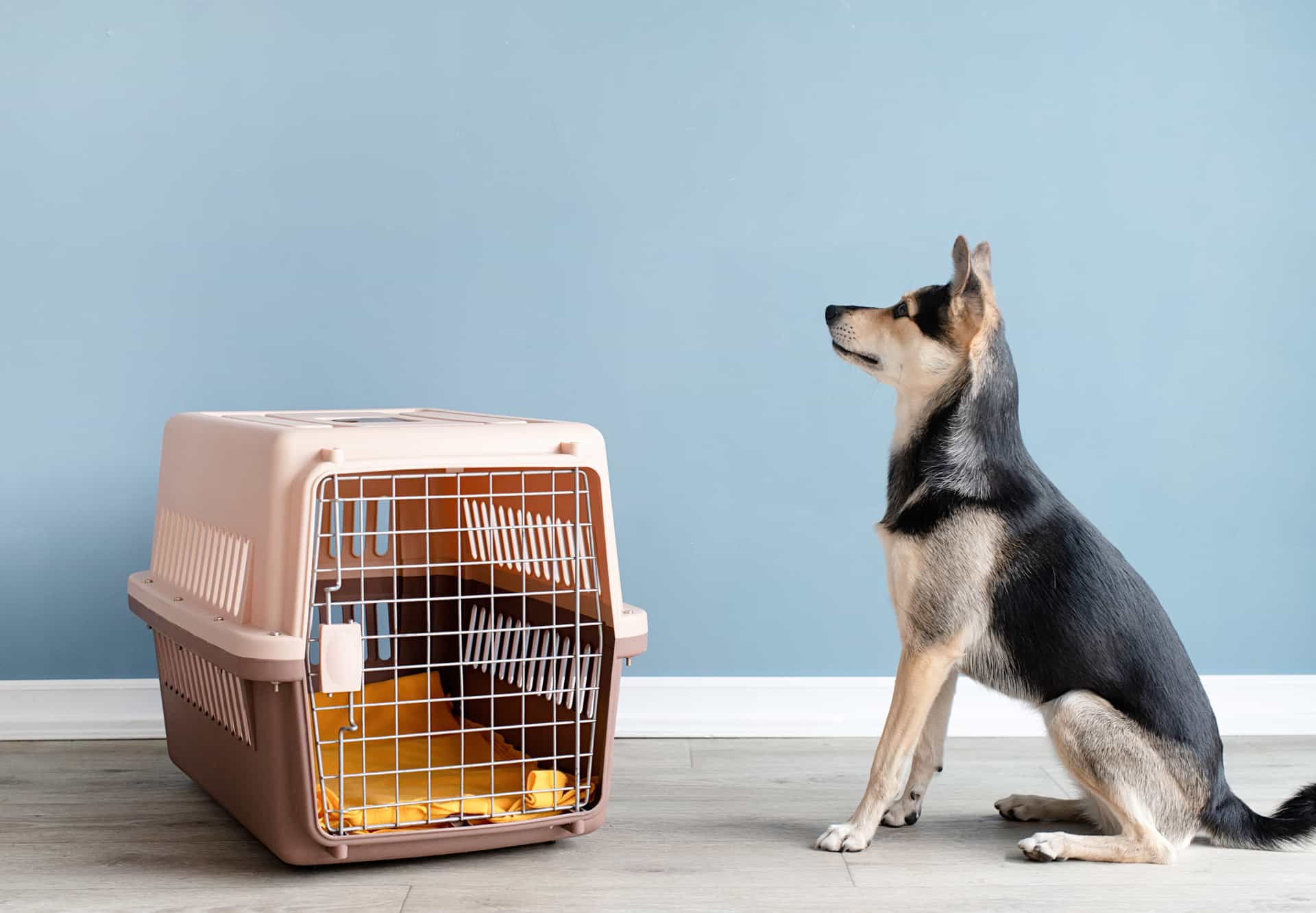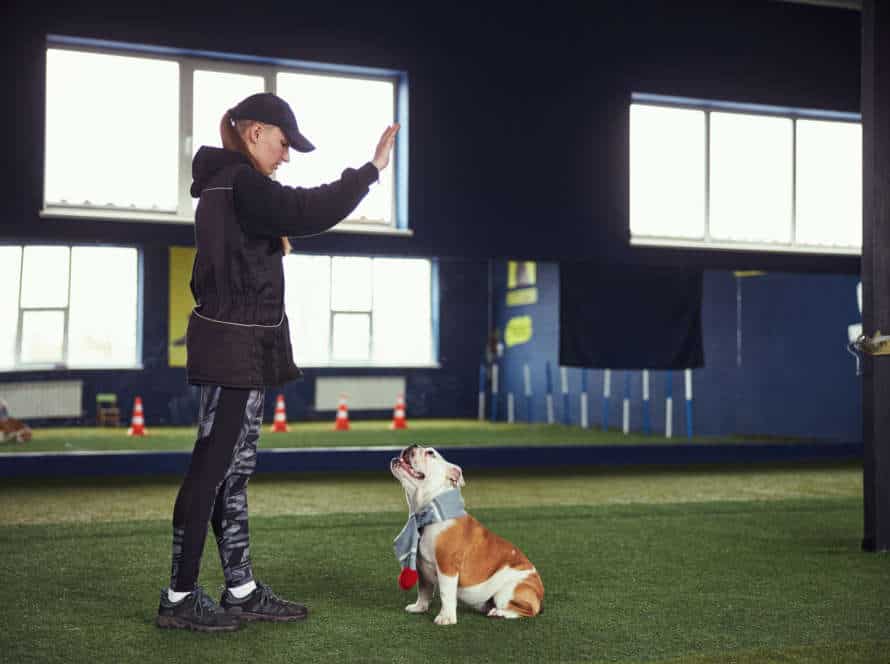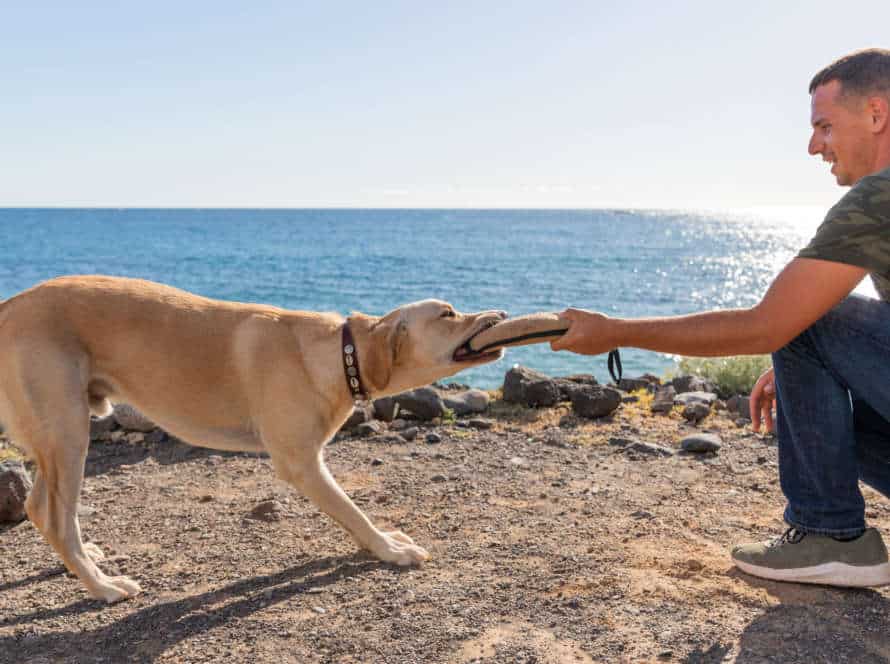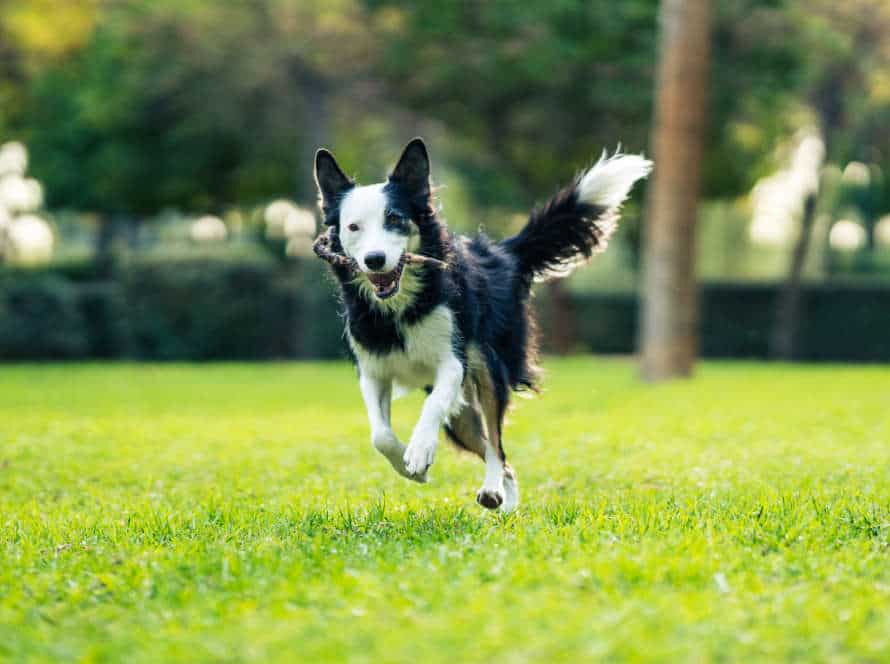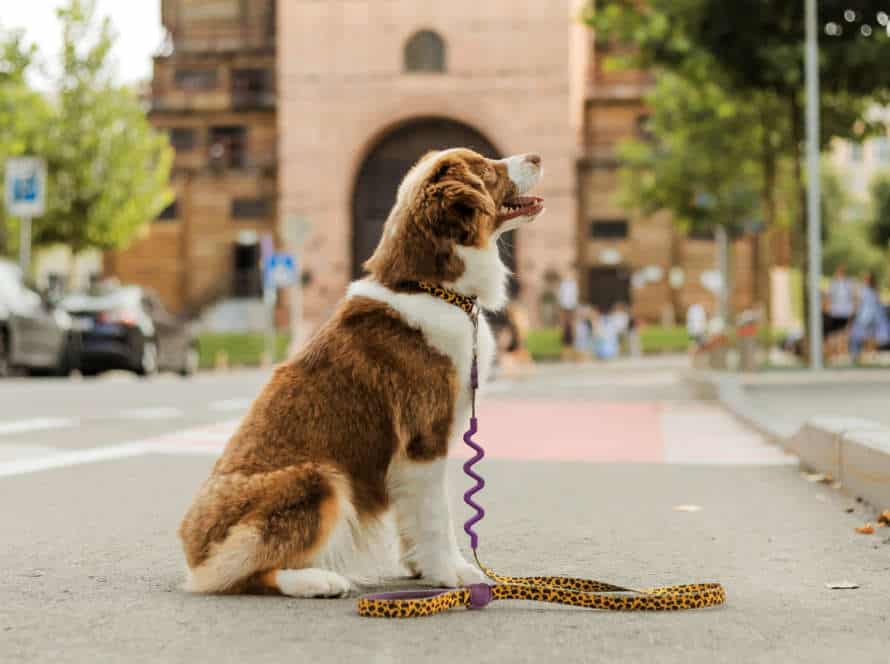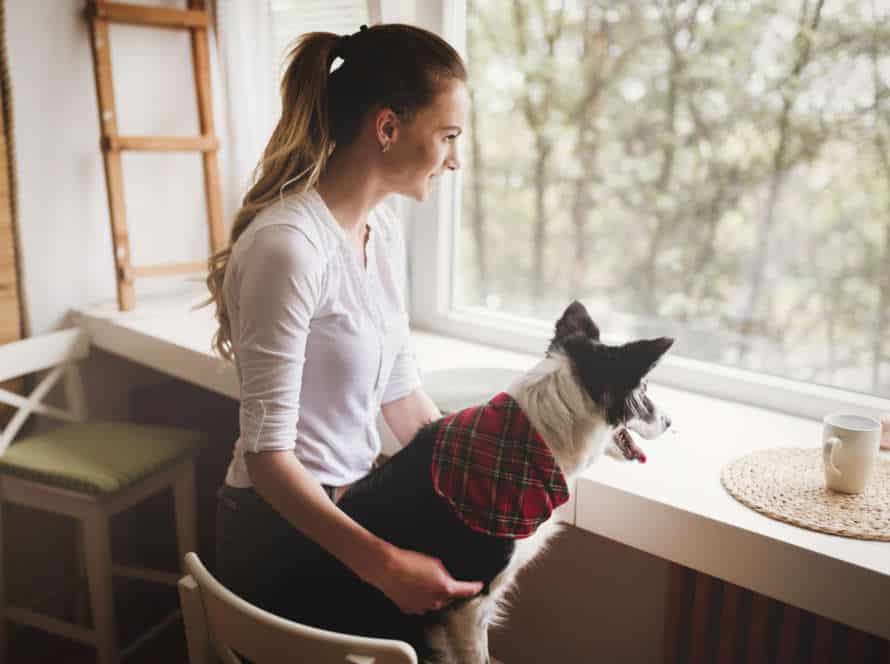Signs Your Dog is Ready to Transition Out of the Crate
Dogs are den-lovers. Crates are great for puppies and adults. It’s important to know when your pup is ready to move out of the crate. To figure that out, look for these signs:
- No anxious or destructive behavior when left alone.
- House-trained and no accidents in the house.
- Not chewing or damaging furniture or other household items.
- Calm and relaxed when left alone.
- No longer seeks the crate for refuge.
If all the signs are there, it may be time to transition them out of the crate. But do it gradually for a successful transition. Tip: Use a baby gate or playpen as a transitional space.
Behavioral Indicators for Transitioning Out of the Crate
Transitioning your pup out of their crate? Watch their behavior closely.
Need to know when it’s time? Here are a few signs:
- Calmness and relaxation in the crate.
- No longer needing it for security.
- Trusting you.
These indicators help you decide when your pup is ready to move on.
No destructive behavior while alone
It’s critical to recognize when your pup is ready to move away from the crate and be alone without wrecking things. Look out for these signs:
- No more whining or barking when left alone.
- Not anxious or stressed when alone for a reasonable length of time.
- No more destructive behavior like chewing furniture or shoes.
- Not pooping in the crate or in the house.
- Able to amuse themselves with toys and activities while alone.
If you see these signs, it’s time to think about transitioning them from the crate. Do it slowly and keep an eye on their behavior.
No separation anxiety
As a pet owner, it’s a must to know when your furry friend is ready to move out of the crate. Here are some signs:
- When left alone for a long time, your dog stays calm and relaxed, outside the crate.
- They no longer chew your stuff or do any destructive behavior.
- The crate seems too small for them now, and they’d rather sleep and rest elsewhere.
- When left alone, they don’t bark, whine, or howl.
Don’t rush this transition. Observe your pup’s behavior carefully so they don’t get anxious. Start by leaving them alone for short periods outside the crate, then slowly increase the time as they get more relaxed.
Pro Tip: Be patient, and give your pup lots of love and attention during this period. It’ll help build their confidence and keep them healthy.
No accidents in the house
Behavioral indicators can help you work out if your pet pal is ready to move from their crate. Here are some cues to watch for:
- Good crate activity: If your pup has had no accidents in their crate for a while, this is a good sign they may be ready to leave it.
- Not too much barking: If your dog whines, barks or is excited when let out of the crate, they aren’t ready to roam yet. If they stay calm and quiet, they may be ready to explore.
- No destructive behaviours: A pup that chews, scratches or paws at anything in the house is not ready to roam. If they show no signs of destruction, they may be ready to leave the crate.
Remember, these aren’t strict rules, and all dogs are different. Monitor your pup’s behaviour for a few weeks before transitioning them out of their crate.
Pro tip: Be patient and give rewards like treats or praise for good behaviour!
Physical Indicators for Transitioning Out of the Crate
Puppies and adult dogs can find a safe and comfortable shelter in their crate. But, how do you know when it’s time for them to transition out? You can look for physical signs! Here’s how you can use these signs to know when it’s time for the transition.
No excessive whining or barking
It’s your job as a pet owner to take care of your furry friend. Recognizing when it’s time for them to move out of the crate is crucial. Look for these signs:
- They can hold their bladder for longer periods.
- They seem relaxed and content in a new spot.
- They don’t display destructive behavior, like chewing, scratching, or digging.
- They obey your commands and come to you when called.
- They’re more social and active around people and other animals.
When you see these signs, you know your dog is ready to move out of the crate. Make sure to reward them with treats and praise for good behavior. This will make the transition easier.
No chewing or scratching on the crate
If your pup is munching or clawing at the crate, it could be time to move them out. Here are some other signs that they may be ready:
- Fewer messes inside. If your pup can control their bladder for longer, they may be ready.
- Calm and relaxed. If they act chill and don’t bark, chew, or jump too much, they might be ready.
- Age and maturity. Pups may need the crate longer until they are potty-trained and mature enough.
While transitioning, watch your pup to make sure they’re adjusting well.
Comfortable sleeping outside of the crate
Are you a dog owner? Do you ponder when it’s time to move your furry pal from the crate to a cozy sleeping spot? There are physical clues that can help you decide if it’s time.
Here are some clues:
- Your pup no longer soils the home and can hold its pee for hours.
- It doesn’t chew on furniture or other things in the house.
- It’s calm when left alone.
- It’s content sleeping on the floor or in a dog bed without whining or barking too much.
- It’s not destructive when left alone outside the crate.
Remember, every dog is unique. Transitioning out of the crate may take some time and patience.
Crate Training Dos and Don’ts
Crate training is ideal for giving your pup a safe and secure place to sleep. But, when should you transition them out? Here are some tips for crate training and signs that your pup is ready for the next step.
Do: provide a comfortable space.
Don’t: force them into it.
When your pup is ready, they’ll show it: they’ll go in the crate on their own and stay inside for longer periods of time.
Gradual training approach for extended periods outside the crate
The gradual training approach is a great way to transition your pup from crate confinement to longer stretches of freedom. Here are some signs that your pet is ready:
- They can keep their bladder in control.
- They don’t chew or destroy things when left alone.
- They stay calm and relaxed, no whining, barking, or destructive behavior.
To begin, start by leaving them out of the crate for short stints. Gradually increase the length of time as they become more comfortable. Remember to reward them with treats and praise. Never punish them for mistakes or accidents.
Providing ample exercise, playtime, and stimulation
To help your pet transition from the crate, provide ample exercise, playtime and stimulation. When you know your pup is ready, check these:
- Potty trained and no accidents indoors.
- Has learned basic obedience commands like sit, stay and come.
- Calm and relaxed when left alone or unsupervised.
- No destructive or aggressive behavior.
Once they meet the criteria, gradually let them explore a larger area – start with a few min and increase as they get used to it. Give them activities to avoid boredom and anxiety.
Not using the crate as a form of punishment
Crate training is vital for any dog-owner, but don’t use it as punishment! Keeping your pup in a crate for long periods can cause negative thoughts and high-anxiety. Here are some Do’s and Don’ts for crate training:
Do’s:
- Introduce your pup gently to the crate.
- Make the crate comfy – add bedding and toys.
- Start with short periods, and increase length as your dog gets used to it.
Don’ts:
- Don’t punish or isolate them with the crate.
- Don’t leave them in there for long/overnight.
Pro Tip: Listen to your pooch’s signs – they will let you know when they’re ready to move on from their crate. Signs to look out for are relaxation, no anxiety, and good behavior outside the crate.
Frequently Asked Questions
Q: How do I know if my dog is ready to transition out of the crate?
A: Some signs that your dog is ready to transition out of the crate include being able to hold their bladder for longer periods, showing less anxiety or agitation when left alone, and not chewing or destroying things in the house while unsupervised.
Q: What age should I start thinking about transitioning my dog out of the crate?
A: It largely depends on the individual dog and their maturity level, but most dogs can start to transition out of the crate between 6 and 12 months of age.
Q: How do I transition my dog out of the crate?
A: Gradual transitions are key. Start by leaving your dog out of the crate for short periods while you are home, gradually building up to leaving them out for longer periods of time. Ensure that the area your dog will be in is safe and comfortable for them, and remove any potential hazards or temptations.
Q: What if my dog still seems anxious or destructive when out of the crate?
A: It may be best to go back to crate training for a bit longer, or try a larger pen or gated area instead of giving them free roam of the house. Addressing the root cause of their anxiety, such as separation anxiety, will also be helpful in this situation.
Q: Should I still use the crate occasionally, even after my dog has fully transitioned out of it?
A: Yes, crates can still be useful tools for travel or in emergency situations. Keep the crate around and periodically revisit crate training to maintain positive associations and skills.

